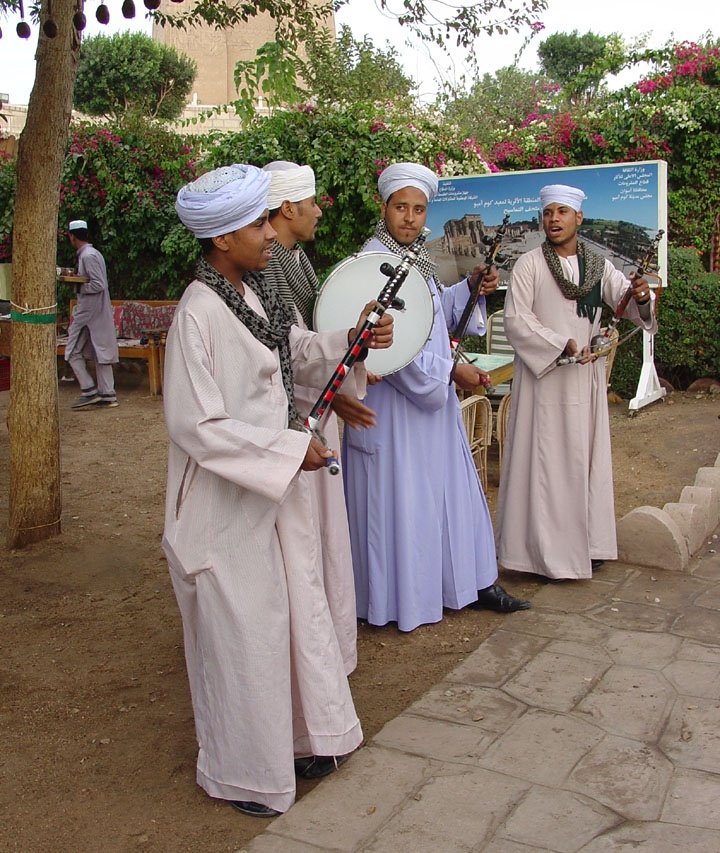An Icon of Egyptian Tradition — the Galabeya
By Shahinda Abdalla
Within the vibrant tapestry of Egyptian culture, the galabeya stands as an enduring symbol of tradition and history. This iconic garment, known for its timeless silhouette and cultural significance, has a rich history that reflects the blending of ancient Egyptian, Islamic, and regional influences. From its origins in antiquity to its modern-day relevance, the galabeya has remained a cornerstone of sartorial tradition in Egypt and the broader Middle East. The galabeya, also pronounced “jellabiya”, is a traditional long robe or tunic worn by both men and women in Egypt and other parts of the Middle East. The roots of the galabeya can be traced back to ancient Egypt, where similar long, loose-fitting garments were worn by both men and women. From the time of the pharaohs, evidence of these flowing tunics made of linen and designed for comfort in the region's hot climate can be found in ancient art and artifacts. During the Islamic Golden Age (from the 8th to 14th centuries), the spread of Islam in the region brought further evolution to the galabeya. The modest and unisex nature of the galabeya meant that it could survive the arrival of this new culture and evolve alongside it.
Today, the galabeya continues to be an essential part of Egyptian and Middle Eastern culture, worn on special occasions, religious celebrations, as well as in everyday life. Its versatility and adaptability have made it a staple of traditional attire in Egypt, with variations in style and embellishment reflecting regional and cultural differences. The galabeya has become a sort of canvas for individual and collective identity, signaling a sense of belonging, heritage, and unity within diverse communities.
Beyond its functional purpose, practicality and the ease of wearing it, the galabeya is a testament to the artistry and craftsmanship of the region. From intricate embroidery to vibrant patterns and designs, the garment serves as a platform for skilled artisans to express cultural motifs and aesthetic creativity. The embellishments on the galabeya often convey stories, symbols, and traditions that have been passed down through generations, making each garment a unique reflection of cultural heritage. Despite its ancient roots, the galabeya has not remained static in the face of modernity. Modern adaptations and interpretations of the galabeya have propelled it into the realm of fashion, ensuring its relevance in the ever-evolving world of style. Internationally, the galabeya has found its way onto fashion runways and into the collections of designers who seek to celebrate its ancient roots an honor its history. The allure of the galabeya lies in its simplicity and versatility. Its influence has transcended borders, captivating audiences around the world with its timeless charm and cultural resonance.
In modern-day Egypt, the galabeya continues to hold a special place in the hearts of its people. It is donned not only during religious festivals and traditional celebrations but also as a comfortable and practical attire for daily wear. Its enduring presence in everyday life serves as a reminder of the rich cultural heritage on which contemporary Egyptian society is built. The galabeya serves as a living link to the past while embracing the present. A national symbol of cultural heritage, the galabeya remains an iconic garment that embodies the spirit, traditions and artistry of generations past and present.




